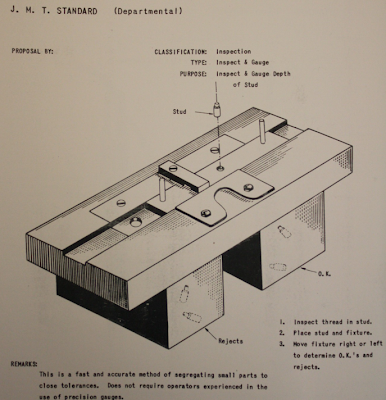TWI & Kaizen Masters - Not all of us can be a Chuck Norris
O.k., o.k., you armchair leansters…you know who you are – right now you are yelling at your monitor: “why make the bad parts at all?! Is the time and money to make the fixture wasted if we can avoid making the bad parts in the first place?” The answer is, of course, YES – that is, IF you know how to prevent the initial error at the time of need. This is where we go wrong with involvement, right? We want the person to be Chuck Norris, coming up with an idea that gives that defect a round house kick to the face so it never shows itself in this factory again! HAI-YA! KAIZEN! And sometimes we want that perfect solution soooo much, that this really good idea would be somehow rejected or put on the back burner.
O.k., now the next question: who is more likely to come up with the error proof idea – the person who devised the fixture idea, building on their knowledge of the product and process? Or is it the engineer that is charged with squeezing 1.4% efficiency out of the waste sorting machine? Who is thinking everyday about the root cause of the problem? The person who has to build a machine that sorts the defect faster and more accurately, or the person who ends up dealing with the defects that invariably slip through the machine and make it into the workplace?
 A better answer is that EVERYONE should be involved with generating small IDEAS, while opening up the COMMUNICATION channels to SHARE them. Of course we have to provide the right SUPPORT structure to get those ideas into ACTION. This level of involvement is the basic idea behind kaizen teian - or small suggestion systems - an evolutionary step related to Job Methods and Work Simplification programs developed decades ago. But we often lose site of the basic skills in how to generate those innovative ideas and how to support those programs that move us to the next level. Instead, we want to jump to the conclusion - KAIZEN! HAI-YA!- without worrying about the details of how to get there. The problem with this approach is that most people aren't Chuck Norris, well, at least for today.
A better answer is that EVERYONE should be involved with generating small IDEAS, while opening up the COMMUNICATION channels to SHARE them. Of course we have to provide the right SUPPORT structure to get those ideas into ACTION. This level of involvement is the basic idea behind kaizen teian - or small suggestion systems - an evolutionary step related to Job Methods and Work Simplification programs developed decades ago. But we often lose site of the basic skills in how to generate those innovative ideas and how to support those programs that move us to the next level. Instead, we want to jump to the conclusion - KAIZEN! HAI-YA!- without worrying about the details of how to get there. The problem with this approach is that most people aren't Chuck Norris, well, at least for today.This is one of the key benefits of the TWI skills: by building confidence in people, we can continue upgrading their problem solving skills as we grow together. Only then, everyone knows the overall current state and knows how to analyze their own situations – making it far easier to genuinely move to the next level and not slip backwards. By mastering one basic skill, we can master the next, eventually so that people are teaching each other through practice.
Labels: Job Methods, Kaizen, Lean

2 Comments:
Bryan, put this one up there in the top posts for the TWI Blog! I really enjoyed the Chuck Norris and Hai-Ya Kaizen part.
The reason I think this post is one of the best is because I see self-appointed improvement masters all the time. If an individual just came back from a class or did 'lean' at their last company, there is still the critical lapse of problem solving skills and team work.
(Actually, 'problem solving' might be on the rise, however problem understanding is still under appreciated.) The more I observe, the more I realize the large void of support by organizations for the '5 Needs.'
My hope for the next few years echoes your post and addresses the popular questions on the Lean groups on the web: "What's the next big thing for Lean?" Well, nothing new I hope. Rather the opportunity for North American organizations to mature their knowledge of Lean/CI as a philosophy, an investment in people, problem solving, and establishing standards. The basics sound easy, but take a lot of work by everyone.
Cheers!And keep on blogging.
Hi Sean,
Glad you liked it. I figure that introductory Lean training is like a romance movie...we see it, and we think love at first sight should happen to everyone. Same thing with Kung-Fu movies...how many kids (and some men) think they are a 6th degree black belt after coming out of the movie theatre.
I'm not saying that everyone thinks they are lean master, but it is absolutely ridiculous to think that we can be within months or even a few years after receiving our training.
By the way, Happy New Year! Hope the family is enjoying this balmy weather!
Post a Comment
Your involvement is essential to ongoing evolution of the leadership community.
Subscribe to Post Comments [Atom]
<< Home